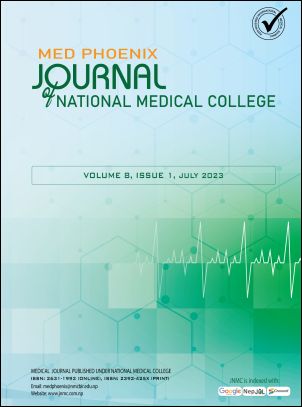Bacteriological Flora of Acute Otitis Externa
DOI:
https://doi.org/10.3126/medphoenix.v8i1.56841Keywords:
Acute otitis externa, MRSA, Staphylococcus aureusAbstract
Introduction: Acute otitis externa refers to inflammation of external auditory meatus skin usually due to infectious etiology. Bacterial etiology of the entity has been established by various studies; however, the predominant causative pathogen has been identified as either Pseudomonas aeruginosa or Staphylococcus aureus. This study aimed to identify the aerobic bacteria responsible for this condition at our centre, and their antimicrobial susceptibility.
Methods: 102 patients presenting to our Outpatient Department with acute otitis externa over a period of 1 year (5th April, 2021 - 4th April, 2022) underwent collection of external auditory canal swabs for aerobic bacteriological profile, followed by antimicrobial susceptibility for the recovered isolates.
Results: The commonest isolate was Staphylococcus aureus (61.8%), followed by Pseudomonas aeruginosa (21.6%). Methicillin-Resistant Staphylococcus aureus (MRSA) was recorded at an alarming rate of 15.7%.
Conclusion: Culture and Sensitivity testing in cases of Acute otitis externa helps to modify the treatment regimen in cases not responding to the usual therapy.
Downloads
Downloads
Published
How to Cite
Issue
Section
License
Copyright (c) 2023 Med Phoenix

This work is licensed under a Creative Commons Attribution 4.0 International License.
Copyright on any research article is transferred in full to MED PHOENIX upon publication. The copyright transfer includes the right to reproduce and distribute the article in any form of reproduction (printing, electronic media or any other form).
© MEDPHOENIX
![]()
Articles in the MED PHOENIX are Open Access articles published under the Creative Commons CC BY License (https://creativecommons.org/licenses/by/4.0/). This license permits use, distribution and reproduction in any medium, provided the original work is properly cited.




